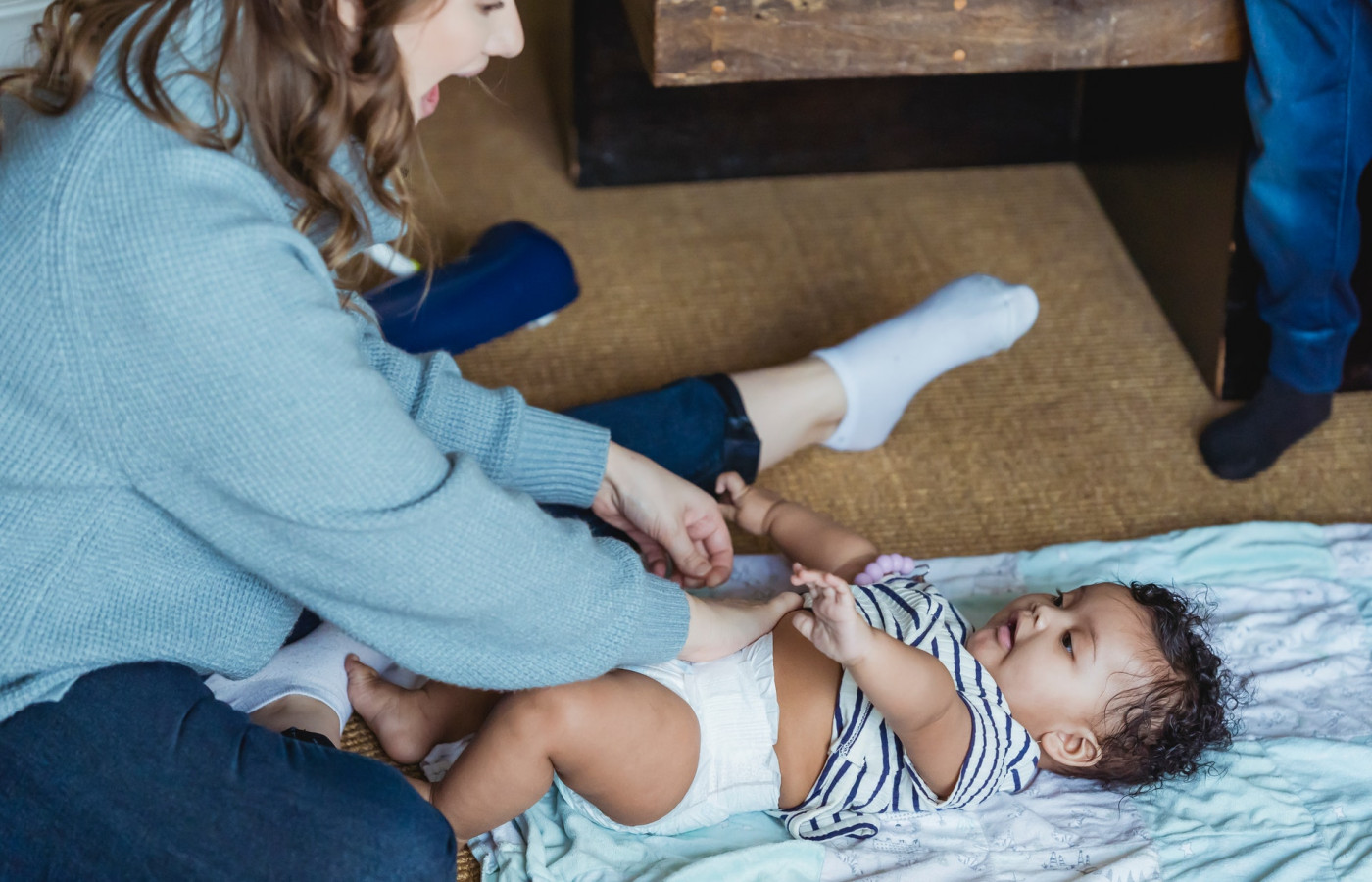Talking through nappy change

Talking through nappy change
Connecting with your child during nappy change
Materials Required
- No additional materials required for this experience - just you!
Play experience profile
-
Age:
-
Min Playtime5-minutes
-
Skills
-
Energy LevelRoutine Times
-
Messiness Rating
-
EYLF Outcomes
Experience Steps
- Involve your infant in the nappy changing process from the very beginning by letting your child know each step of the way what is about to happen. E.g. Just before you pick up your child say "Let's go and change your nappy" and as you reach out your arms say "I'm going to pick you up now"
- Describe what it happening throughout the process pausing after you speak, giving your child the opportunity to respond in their own unique way - replicating the natural back and forth of conversation (serve and return)
- Observe your child and notice their responses. This might look like a smile, cooing or maybe fussing - these are all different signs about your infant's thoughts and emotions.

What to talk about, or questions to ask during the experience
- Full/wet nappy
- Dry nappy
- "Im going to pick you up now are you ready?"
- Describing each step e.g. "now I'm taking off your full nappy"
- Interpreting and responding to your infants communication "I can see you're a little uncomfortable, I'm almost finished changing your nappy"
Build on this...
- Incorporate singing or nursery rhymes e.g. 'This Little Piggy', 'Twinkle Twinkle Little Star', 'Heads, Shoulders, Knees and Toes'
- Add overhead visual interest to your nappy changing area (such as a family photo, images of animals, a mobile) which provide the opportunity for joint attention
- Continue having conversations with your child throughout the day where you pause after you speak to give your child the opportunity to contribute
WHO guidelines for physical activity and sedentary behaviour
Provide evidence-based public health recommendations for children, adolescents and adults on physical activity.
Learn more
Provide evidence-based public health recommendations for children, adolescents and adults on physical activity. Learn more
After nappy change be sure to incorporate lots of opportunities throughout the day for movement. As your child grows and develops encourage them to become increasingly independent at nappy change by providing a step for them to climb onto the change table with your support.
EYLF Outcomes
The Early Years Learning Framework has been designed for use by early childhood educators working in partnership with families, children’s first and most influential educators.
View PDF
The Early Years Learning Framework has been designed for use by early childhood educators working in partnership with families, children’s first and most influential educators. View PDF
- Children feel safe, secure, and supported
- Children interact verbally and non-verbally with others for a range of purposes
- Children develop a sense of belonging to groups and communities and an understanding of the reciprocal rights and responsibilities necessary for active community participation
EYLF Principle
Principle 1: Secure, respectful and reciprocal relationships. Through a widening network of secure relationships, children develop confidence and feel respected and valued.
EYLF Practice
Practice: Responsiveness to children. Responsive learning relationships are strengthened as educators and children learn together and share decisions, respect and trust. Responsiveness enables educators to respectfully enter children’s play and ongoing projects, stimulate their thinking and enrich their learning.
Author:


